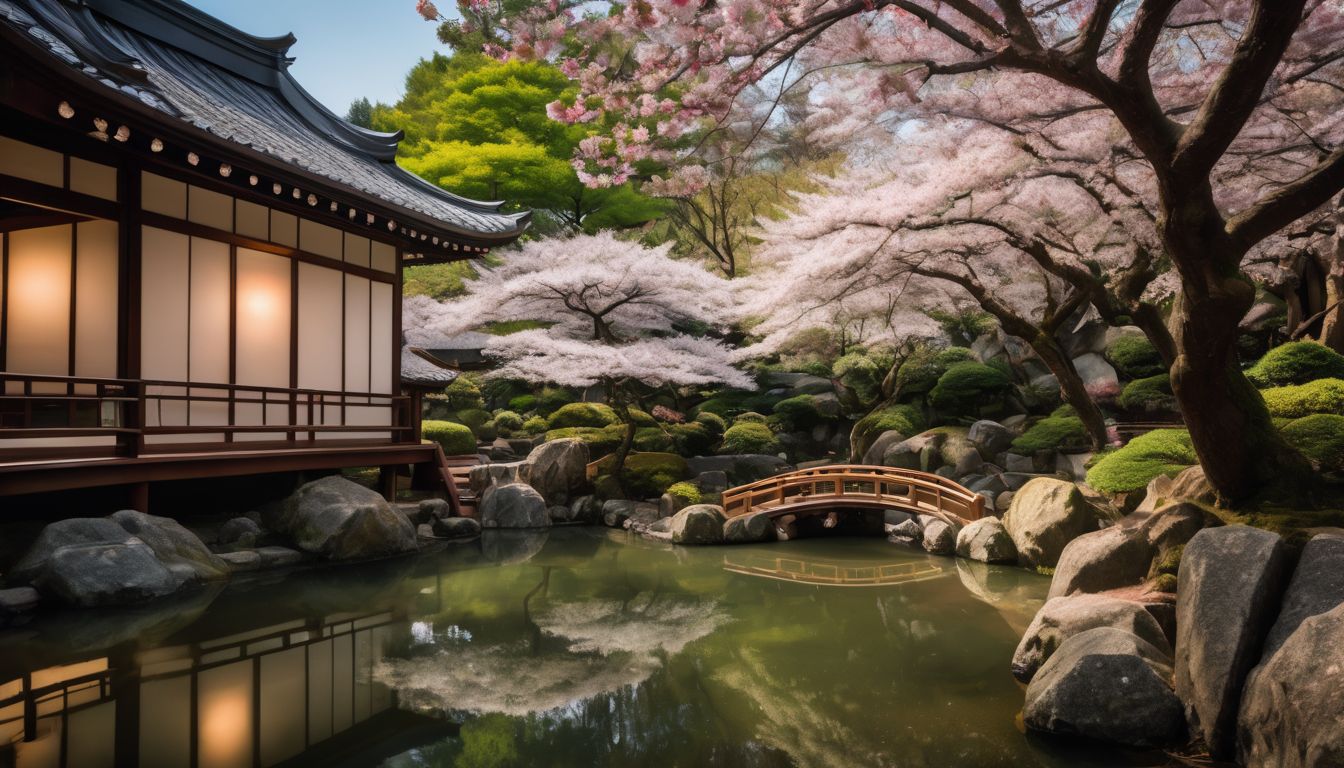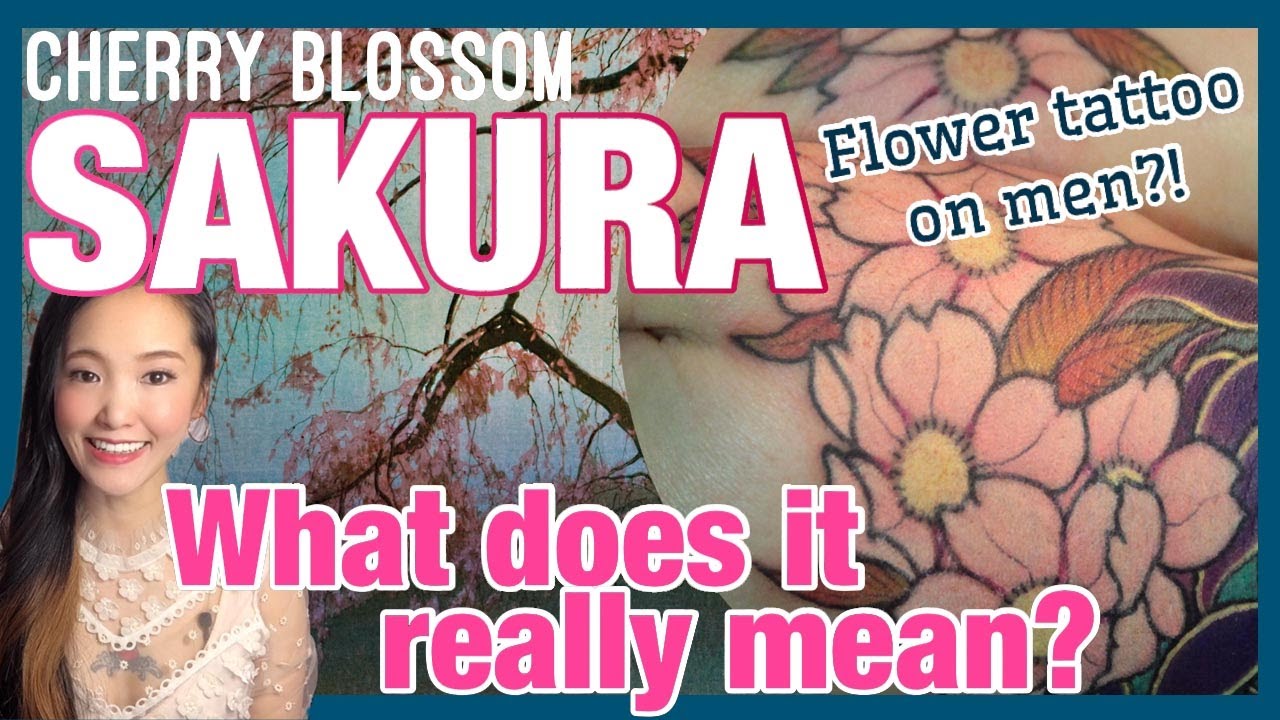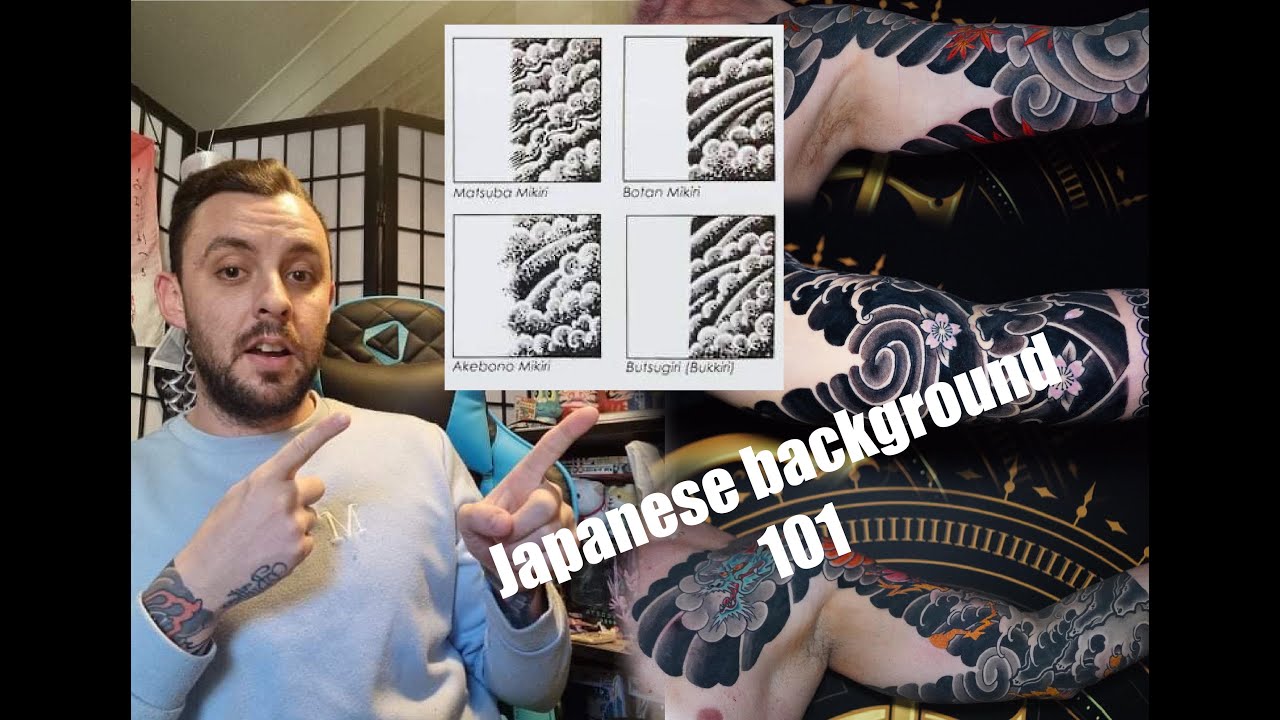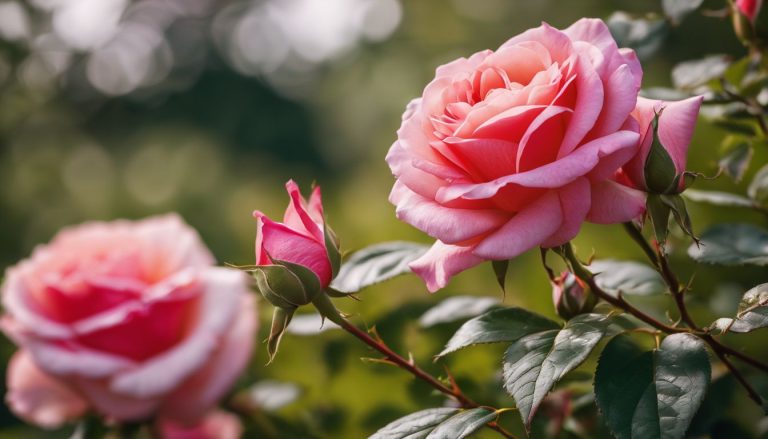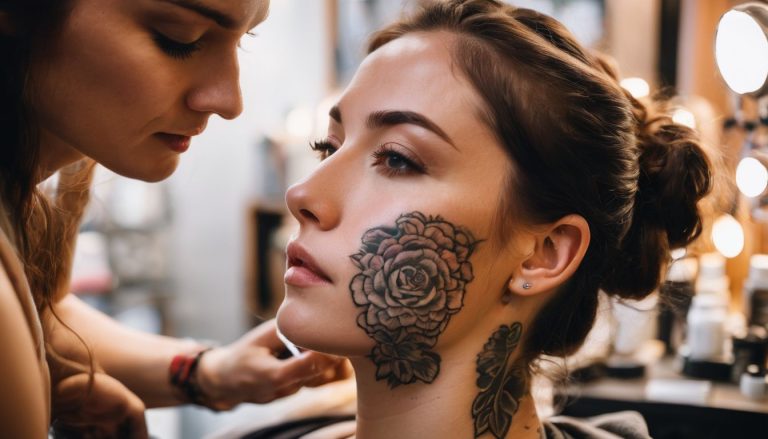The Symbolism and Meaning Behind Japanese Flower Tattoos
Create your own unique tattoos and art for your home
Choosing the perfect tattoo can be tough, especially one rich in cultural symbolism. A Japanese flower tattoo carries layers of meaning, with each bloom telling its own story. This article will guide you through the meanings behind various Japanese flowers and how they might resonate with your personal journey.
Dive in to discover a world blooming with tradition and beauty!
Key Takeaways
- Japanese flower tattoos such as the red rose, lotus, peony, cherry blossom, and chrysanthemum symbolize passion, resilience, wealth, beauty and transience, and loyalty respectively.
- Colors in Japanese flower tattoos add depth to the symbolism; white can mean purity while pink often stands for femininity and fortune.
- Choosing a tattoo with multiple flowers combines different meanings into one design for a richer personal statement.
- Placement of the tattoo on the body—from arms to feet—can enhance visibility and integrate with natural contours for larger or more intricate artwork.
- Understanding each flower’s cultural significance ensures that individuals select tattoos that resonate most deeply with their personal stories or values.
Types and Meanings of Japanese Flower Tattoos
Japanese flower tattoos carry deep symbolism and meaning, with each flower representing different virtues and emotions. From the passion of the red rose to the resilience of the lotus, these floral designs hold significant cultural significance.
Red rose for passion
A red rose tattoo pulses with the energy of deep desire and unshakable love. It stands out in Japanese flower tattoo art for its universal symbol of passion and romantic devotion. Bold in color, a red rose captures attention on the skin as it does in nature, declaring strong emotions without saying a word.
Incorporating this vibrant bloom into a Japanese traditional flower tattoo adds an element of fiery affection to the design. Whether etched alone or entwined with other symbols, it gives voice to one’s innermost passions and signifies a commitment to love that burns brightly through time.
Lotus for resilience and purity
The lotus flower holds deep cultural significance in Japanese tattoos, representing resilience and purity. In Japanese culture, the lotus is associated with rebirth and enlightenment, symbolizing the ability to rise above adversities.
The lotus often reflects a person’s journey through hardships and their ability to emerge stronger and pure from life’s challenges. Furthermore, the lotus represents spiritual growth and inner strength, making it a popular choice for individuals seeking a tattoo that embodies resilience and personal transformation.
Japanese flower tattoos featuring the lotus can also convey purity and grace. The symbolism of purity ties into the idea of blossoming despite adverse circumstances, reflecting an individual’s capacity to thrive regardless of challenges.
Peony for wealth and honor
The peony flower, known as the “King of Flowers,” is a popular choice for Japanese flower tattoos due to its symbolism of good fortune, wealth, nobility, bravery, and honor. It often represents success and richness in traditional Japanese culture.
The peony’s cultural significance makes it a meaningful and powerful symbol for individuals seeking to convey notions of prosperity and respect through their body art.
Peony symbols have deep roots in Japanese traditions; they hold personal significance for many people who choose to include them in their tattoo designs. The association with wealth and honor adds depth and meaning to the imagery, making it a compelling choice for those looking for aesthetically appealing ink that also carries significant cultural weight.
Cherry blossom for beauty and transience
Transitioning from the symbolism of wealth and honor associated with the peony flower, Japanese culture also holds the cherry blossom in high regard for its representation of beauty and transience.
The cherry blossom, known as “sakura,” carries a deep cultural significance in Japan and symbolizes the fleeting nature of life. Its brief but magnificent bloom is a reminder that beauty is sometimes temporary, encouraging individuals to cherish moments of joy and appreciate life’s impermanence.
The delicate pink petals of the cherry blossom create a breathtaking spectacle during springtime in Japan, captivating onlookers with their ephemeral display. In Japanese flower tattoos, the cherry blossom often embodies not only physical beauty but also spiritual elegance and mortality.
Chrysanthemum for loyalty and longevity
The chrysanthemum, a symbol of loyalty and longevity, holds significant cultural importance in Japanese flower tattoos. The flower represents friendship and is often chosen for its meaning of endurance and timeless beauty.
In Japanese culture, the chrysanthemum is associated with the Imperial family as it signifies imperial power and grace. Its deep roots in tradition make it a popular choice among those seeking to express enduring bonds or celebrate long-lasting relationships through their tattoos.
When considering the placement of your Japanese flower tattoo, understanding the deeper meanings behind each bloom will help you find one that resonates with your personal values and experiences.
Common Themes in Japanese Flower Tattoos
Beauty, symbolism, spiritual meaning, and resilience are common themes found in Japanese flower tattoos. These designs often hold deep personal significance and are chosen for their rich cultural and aesthetic meanings.
Beauty
The beauty of Japanese flower tattoos lies in their intricate designs and vibrant colors, each flower symbolizing unique aspects such as passion, resilience, and purity. From the striking red rose representing passion to the delicate cherry blossom embodying both beauty and transience, these tattoos capture the essence of nature’s beauty.
The symbolic use of flowers like the lotus for spiritual meaning and chrysanthemum for loyalty further enhances the depth and cultural significance of these tattoos. Whether adorning arms, backs, chests or legs, Japanese flower tattoos radiate beauty while conveying profound symbolism.
When considering a Japanese flower tattoo design that embodies elegance and symbolism alike, color plays a crucial role in expressing personal significance. By weaving together various hues with floral combinations, individuals can add layers of meaning to their chosen tattoo motifs.
Each bloom’s representation offers a glimpse into an individual’s personality or life journey while honoring traditional Japanese aesthetics.
Symbolism
After understanding the beauty of Japanese flower tattoos, it’s essential to recognize the rich symbolism they hold. Each flower embodies deep cultural and personal meanings. The peony represents good fortune, wealth, bravery, and honor in Japanese culture.
Meanwhile, the cherry blossom signifies happiness, love, and new beginnings as Japan’s national flower. Additionally, the chrysanthemum symbolizes friendship – a trait rarely represented by flowers in Japanese tradition.
Moreover, the lotus is associated with purity and rebirth in Japanese culture. These symbolic meanings offer individuals a way to express their personal values through their tattoo choices.
Spiritual meaning
Japanese flower tattoos hold deep spiritual meaning, with each flower symbolizing various virtues and beliefs in Japanese culture. For instance, the lotus flower represents purity and enlightenment, making it a popular choice for those seeking spiritual growth and rebirth through their tattoo.
The chrysanthemum, on the other hand, embodies loyalty and longevity, reflecting an individual’s commitment to their spirituality and inner strength in overcoming life’s challenges.
Additionally, the cherry blossom signifies new beginnings and happiness, embodying the transient nature of life and reminding individuals to embrace every moment with joy.
These spiritual meanings embedded within Japanese flower tattoos provide individuals with a profound connection to their values and beliefs as they carry these symbols on their skin.
Resilience and strength
Peonies and lotus flowers are commonly chosen for Japanese flower tattoos to symbolize resilience and strength. The peony represents bravery, honor, and nobility, while the lotus signifies purity, enlightenment, and rebirth.
These powerful symbols are often used in tattoos to convey inner strength and the ability to overcome adversity.
Cherry blossoms also hold a significant meaning of resilience in Japanese culture as they represent new beginnings and the fleeting nature of life. Through these floral designs, individuals can express their determination to persevere through challenges and embrace the beauty of life’s ever-changing journey.
Placement of Japanese Flower Tattoos
Japanese flower tattoos are commonly placed on the arms and sleeves, back and shoulders, chest and ribs, as well as legs and feet. If you’re interested in learning more about the significance of Japanese flower tattoos, keep reading to explore their meanings and symbolism.
Arms and sleeves
Japanese flower tattoos are commonly placed on arms and sleeves, allowing for a visually stunning display of intricate designs. The arms provide ample space for showcasing the vibrant colors and delicate details of flowers such as cherry blossoms, lotus, peonies, or chrysanthemums.
These tattoos often hold deep personal significance and cultural meaning while also serving as a symbol of beauty, strength, resilience, and spiritual connection. The sleeve placement allows for larger and more elaborate floral compositions that can flow seamlessly with the natural contours of the arm.
Floral designs on sleeves have been popular in traditional Japanese tattoo art for centuries due to their ability to convey complex meanings through intricate patterns. As an extension of this tradition, modern interpretations continue to evolve as artists incorporate contemporary elements into these timeless symbols.
Back and shoulders
As we move from discussing the placement of Japanese flower tattoos on arms and sleeves, it’s important to consider the significance of placing these designs on the back and shoulders.
The back and shoulders offer a larger canvas for more intricate and detailed tattoo designs, making them popular choices for those looking to incorporate multiple elements or symbols.
These areas also allow for better visibility, especially when wearing clothing that exposes the back or when opting for shoulder tattoos that can be showcased in sleeveless attire.
Additionally, the back and shoulders are powerful locations symbolically as they represent strength, resilience, and support.
When selecting a Japanese flower tattoo design for the back or shoulders, individuals often choose larger blooms such as peonies or chrysanthemums due to their extensive petals that can cover a wider area.
Chest and ribs
Japanese flower tattoos on the chest and ribs are often chosen for their visibility and symbolic significance. The placement of these intricate designs in this area allows for a larger canvas, making it suitable for detailed and elaborate floral patterns.
Some individuals opt to have cherry blossoms adorning their chests, symbolizing beauty and transience, while others select chrysanthemums or peonies as a representation of loyalty, longevity, wealth, and honor.
These flowers not only enhance the natural contours of the body but also hold deep cultural meanings within Japanese tradition. The ribs are an intimate yet powerful location for these meaningful pieces of art.
Floral tattoo designs on the chest and ribs offer a unique opportunity to embody personal stories with rich symbolism. They provide a bold statement that showcases individuality through culturally significant imagery within traditional Japanese artistry.
Legs and feet
Continuing from the placement of Japanese flower tattoos on the chest and ribs, another popular choice for placement is on the legs and feet. These areas offer a unique canvas to display intricate designs that hold personal or cultural significance.
In particular, cherry blossoms are commonly tattooed on the legs, symbolizing new beginnings and beauty. Additionally, lotus flowers are often chosen for their association with resilience and purity, making them a meaningful option for leg or foot tattoos.
The symbolism behind Japanese flower tattoos varies depending on the specific flower selected and its cultural importance. Peonies can represent wealth and honor when inked onto the legs or feet, while chrysanthemums may symbolize loyalty and longevity in this area.
Choosing the Right Japanese Flower for Your Tattoo
Consider the personal significance and symbolism of each Japanese flower, as well as color symbolism and potential floral combinations to ensure you choose the right design for your tattoo.
Each flower holds its own unique meaning and can symbolize different aspects of life, so take time to research and find the perfect fit for you.
Personal significance
The personal significance of Japanese flower tattoos lies in the individual’s connection to the chosen bloom and its cultural meaning. The decision to ink a specific flower could reflect a personal experience, belief, or aspiration linked to the symbolism attached to that particular blossom.
For instance, someone may choose a cherry blossom design as a tribute to new beginnings or love. Alternatively, selecting a chrysanthemum tattoo might symbolize friendship and longevity based on their own values.
This deeply personal aspect adds depth and meaning to Japanese flower tattoos, making them not only aesthetically beautiful but also spiritually significant.
Color symbolism
Japanese flower tattoos often incorporate specific colors to convey deeper meanings. Each color used in these tattoos has its own symbolism and significance. For instance, white flowers symbolize truth, purity, and soothing others, while green represents energy and life, and pink symbolizes femininity and good fortune.
These color choices can add layers of meaning to the overall design of the tattoo.
The selection of colors in Japanese flower tattoos also reflects cultural beliefs and values. By incorporating certain hues into their designs, individuals can express personal sentiments or align themselves with particular cultural ideals.
Floral combinations
Floral combinations are a popular choice for Japanese flower tattoos, allowing individuals to create unique designs that hold personal significance. Combining different flowers in a tattoo design allows for the incorporation of multiple meanings and symbols, providing a more comprehensive representation of the individual’s values and beliefs.
For example, combining the lotus flower, symbolizing purity and rebirth, with chrysanthemum representing loyalty can convey a profound message about resilience and devotion.
When choosing floral combinations for a Japanese flower tattoo, it is essential to consider the symbolism and cultural significance of each flower to ensure that they harmonize well together.
Conclusion
In conclusion, Japanese flower tattoos hold deep symbolism and cultural significance. The choice of a specific flower can have personal meaning for the individual. The various flowers carry unique meanings that reflect beauty, resilience, spirituality, and strength.
Understanding the symbolism behind Japanese flower tattoos can help in choosing the right design to express one’s inner values and beliefs. Whether it is a red rose for passion or a lotus for purity, each tattoo tells a story that goes beyond its aesthetic appeal.
FAQs
1. What do Japanese flower tattoos symbolize?
Japanese flower tattoos are full of symbolism from Japanese culture, like the cherry blossom representing life’s beauty and fleeting nature, or the lotus illustrating purity and enlightenment.
2. Why might someone get a Japanese peony tattoo?
Someone may choose a Japanese peony flower tattoo for its symbols of good fortune, bravery, and honor in traditional Japanese tattoo tradition.
3. Are there meanings to different flower designs in Japanese tattoos?
Yes! Each floral design in a Japanese tattoo has a unique meaning; for instance, the chrysanthemum stands for longevity while the lotus signifies rebirth and spiritual awakening.
4. Can you explain cherry blossom symbolism in tattoos?
Cherry blossoms in tattoos capture the essence of life’s temporary beauty; reminding us that every moment is precious as they bloom brilliantly but briefly each year within Japanese art and symbolism.
5. Is there more than one style for creating these symbolic tattoos?
Absolutely! Traditional Japanese flower tattoo sleeve designs can vary with intricate patterns embracing elements from Symbolism in Japanese art to personalized depictions combining various flowers and their meanings.

